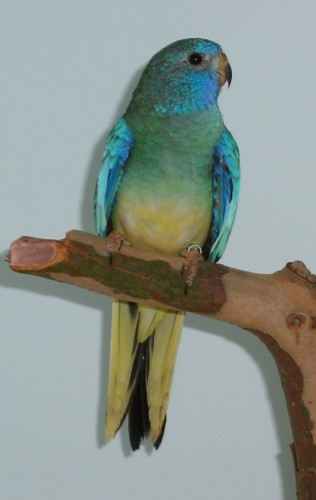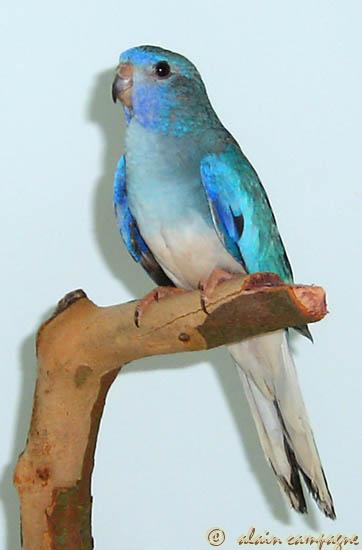Scarlet chested grasskeet aka splendid grasskeet is a popular species of parakeet from Australia. They are quiet birds in general but males will sing a quiet song to entice his mate. They are peaceful and mixes well with non-aggressive finches and other grasskeets in general, but would avoid mixing with aggressive species or larger hookbills. They enjoy larger flights - minimum 30"x30" per pair, and do well with a standard parakeet diet of seed mix, greens, and eggfood. Given the right conditions, they readily breed. Health wise, they are considered a bit more delicate than other grasskeets like turquoisines and bourkes - warmer and dryer conditions are appreciated. I started keeping scarlets in 2008 after seeing pictures of them online. After doing some intense research, I just knew I had to start keeping them. Although the normal scarlet is probably one of the most beautiful birds in aviculture, another reason for their popularity is the availability of many mutations. Now, I will try to give a brief description of the more commonly available mutations although a lot of the mutations and better examples of the mutations are much more readily available in Europe than the USA.
NORMAL:
 |
| mature adult normal male |
 |
| young normal hen |
LUTINO: like most lutino mutations, it is sex-linked recessive
 |
| lutino male http://grassparrots.free.fr/scarletchest/splmalut%20001n%20copie_jpg_view.htm |
 |
| lutino hen |
CINNAMON: sex-linked recessive
 |
| cinnamon male - photo A.C. / J .Gruson http://grassparrots.free.fr/scarletchest/gmcin%20023_jpg_view.htm |
 |
| cinnamon hen (with red belly) |
PALLID: sex-linked recessive
 |
| normal male on left, pallid male on right http://grassparrots.free.fr/scarletchest/Copie%20de%20A%20normal%20et%20pallid_jpg_view.htm |
BLUE: autosomal recessive. This is probably the most complicated and confusing since there are several blue mutations that are incompletely dominant to each other. Overall, there is seagreen aka aqua, turquoise, and white front blue. Sometimes aqua and turquoise are referred to as par-blue. I've read that white front blue is a combination of seagreen and turquoise. With a lot of interbreeding of the different blue mutations, sometimes it can be a challenge to know exactly what a bird is.
 |
| seagreen/aqua male |
 |
| seagreen/aqua hen http://grassparrots.free.fr/scarletchest/g033_jpg_view.htm |
 |
| turquoise male http://grassparrots.free.fr/scarletchest/AMsyturquoise_jpg_view.htm |
 |
| young tuquoise hen |
 |
| white front blue male |
 |
| white front blue hen - photo A.C. / J. Gruson http://grassparrots.free.fr/scarletchest/ajgfbl%20052_jpg_view.htm |
GREY: autosomal dominant. The grey can be combined with any normal or mutation scarlets.
 |
| grey white front blue male |
 |
| grey green male - photo A.C / D. Moyer http://grassparrots.free.fr/scarletchest/M039gvm_jpg_view.htm |
VIOLET: autosomal dominant. Can be combined with any normal or mutation scarlet, but since it affects the blue color, will show up best in the blue series. Double factor will be a more intense effect than single factor.
 |
| double factor violet white front blue male - bred by H. Köster http://grassparrots.free.fr/scarletchest/Copie%20de%20Violet%20cock_jpg_view.htm |
PIED: autosomal dominant. Can apply to any normal or mutation scarlet.
 |
| pied normal male - photo Colin O'Hara http://grassparrots.free.fr/scarletchest/YF%20NORMAL%20PIED350_jpg_view.htm |
RED FRONT: modification that can be improved with selective breeding
 |
| red front normal male - photo J.Suikerbuik http://grassparrots.free.fr/scarletchest/svr_jpg_view.htm |
















